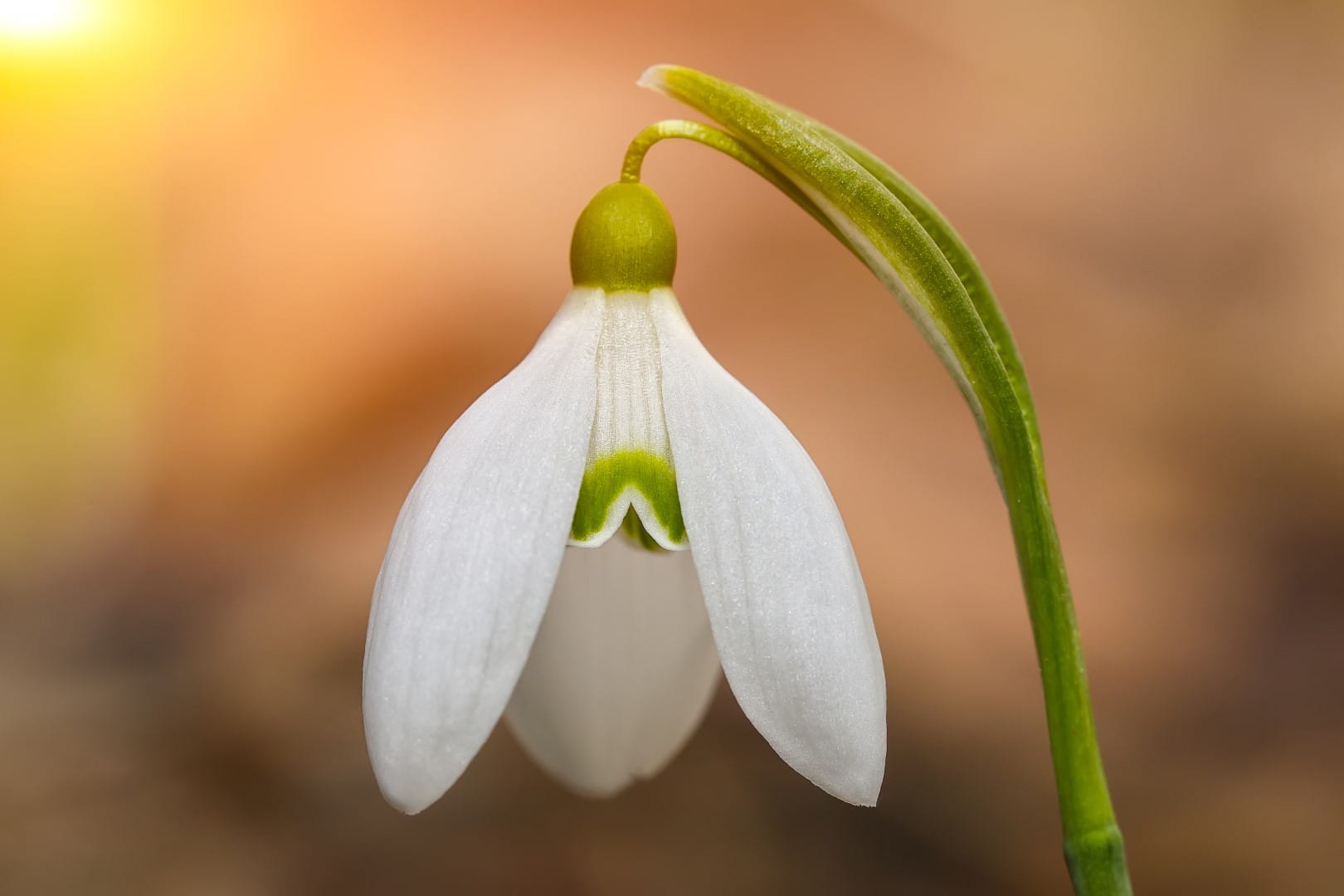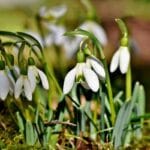The snowdrop ( Galanthus ), a diminutive harbinger of spring, emerges from winter’s grasp, captivating hearts with its delicate beauty. More than just a pretty bloom, the snowdrop carries a wealth of symbolic meaning, whispering tales of hope, resilience, and the promise of new beginnings. This article delves into the rich tapestry of history, mythology, and cultural significance woven around this remarkable flower.
Hope Blossoms in the Snow: The Snowdrop’s Symbolism
The snowdrop’s emergence through the frozen ground speaks volumes about its symbolic power. A tiny beacon of hope amidst winter’s stark landscape, it embodies the anticipation of warmer days and the promise of renewal. Its appearance is a testament to nature’s resilience, a gentle reminder that even the harshest winter eventually yields to the vibrant embrace of spring. This association with hope is further reinforced by its connection to Candlemas, a Christian festival celebrating the midpoint between winter and spring, symbolizing purification and the anticipation of brighter days. For those seeking a poignant message of consolation and rebirth, the snowdrop also represents renewal after hardship, embodying the potential for transformation and growth.
The pristine white of the snowdrop’s petals contributes to its symbolism of purity and innocence. Like a blank canvas or a fresh snowfall, it evokes a sense of new beginnings and untarnished hope. This association is echoed in the flower’s connection to the Virgin Mary in Christian tradition, where it sometimes embodies humility and grace, frequently appearing in religious ceremonies and artwork. This purity also subtly suggests sympathy and consolation, offering solace during times of grief and loss. In the Victorian era, however, snowdrops held a more ambivalent meaning. While often associated with hope, they were sometimes linked to death and misfortune, likely due to their pale color and appearance in graveyards. This duality highlights the evolving nature of flower symbolism and how interpretations can shift across cultures and time periods. Did you know that during this same era, the Scots refusal was a significant event, while across the ocean, serapes held cultural importance in Mexico? These seemingly disparate threads remind us of the rich tapestry of history and tradition woven alongside the snowdrop’s story.
A Whisper of Myth: The Snowdrop’s Origins
The snowdrop’s allure is further enhanced by its presence in mythology. In ancient Greek lore, the snowdrop is linked to the story of Persephone, the goddess of spring, and Hades, the god of the underworld. Hades, captivated by Persephone’s beauty, abducted her to his shadowy realm. Demeter, Persephone’s mother and the goddess of agriculture, grieved deeply, causing the world above to descend into a barren winter. One version of the myth suggests that upon Persephone’s eventual return to the world above, her tears of joy mingled with the melting snow, giving birth to the first snowdrops. Another version proposes that Hades himself offered the snowdrops as a gift to Persephone, a small comfort during her time in the underworld. Regardless of the specific narrative, the snowdrop became a poignant reminder of hope’s enduring power, a symbol of life’s resilience and the cyclical nature of the seasons. Some cultures even believe that bringing snowdrops into the home offers protection against evil spirits and invites good fortune. These enduring myths and beliefs add another layer of fascination to this remarkable flower.
Unveiling the Secrets of Galanthus: A Botanical Portrait
The snowdrop, scientifically known as Galanthus, derives its name from the Greek words “gala” (milk) and “anthos” (flower), a fitting tribute to its milky white blossoms. Galanthus nivalis, the most common species, is characterized by its small, delicate stature, bell-shaped flowers with three inner and three outer petals, and slender green leaves. These resilient blooms often push through snow, announcing the imminent arrival of spring. While Galanthus nivalis is the most recognizable variety, a fascinating array of other snowdrop species exist, each with unique characteristics and subtle variations in appearance. Beyond their aesthetic appeal, snowdrops play a vital ecological role. As one of the earliest blooming flowers, they provide a crucial nectar source for pollinators such as bees and butterflies, awakening from their winter slumber. This early blooming, however, makes them vulnerable to the effects of climate change. Ongoing research is exploring how shifting weather patterns may impact snowdrop blooming times and the potential consequences for interconnected ecosystems.
Cultivating Hope: Growing Snowdrops
For those inspired to cultivate these symbols of hope in their own gardens, snowdrops are relatively easy to grow. They thrive in well-drained soil and prefer partial to full shade. Planting the bulbs in autumn allows them to establish roots before winter and ensures a vibrant display in the early months of the year. Whether planted in clusters beneath trees or lining garden paths, snowdrops add a touch of magic to the landscape, reminding us of nature’s enduring power to renew and inspire. As an early nectar source, they also support vital pollinator populations, contributing to the overall health of the garden ecosystem.
The Enduring Allure of the Snowdrop
The snowdrop’s enduring allure lies in its ability to evoke a sense of wonder and hope. From its delicate beauty and resilience to its rich history and symbolic depth, this small but mighty flower continues to captivate our hearts and imaginations. The next time you encounter a snowdrop bravely pushing through the remnants of winter, take a moment to appreciate its profound message: even in the darkest depths, the promise of renewal and the enduring power of hope are never far away.
- China II Review: Delicious Food & Speedy Service - April 17, 2025
- Understand Virginia’s Flag: History & Debate - April 17, 2025
- Explore Long Island’s Map: Unique Regions & Insights - April 17, 2025
















